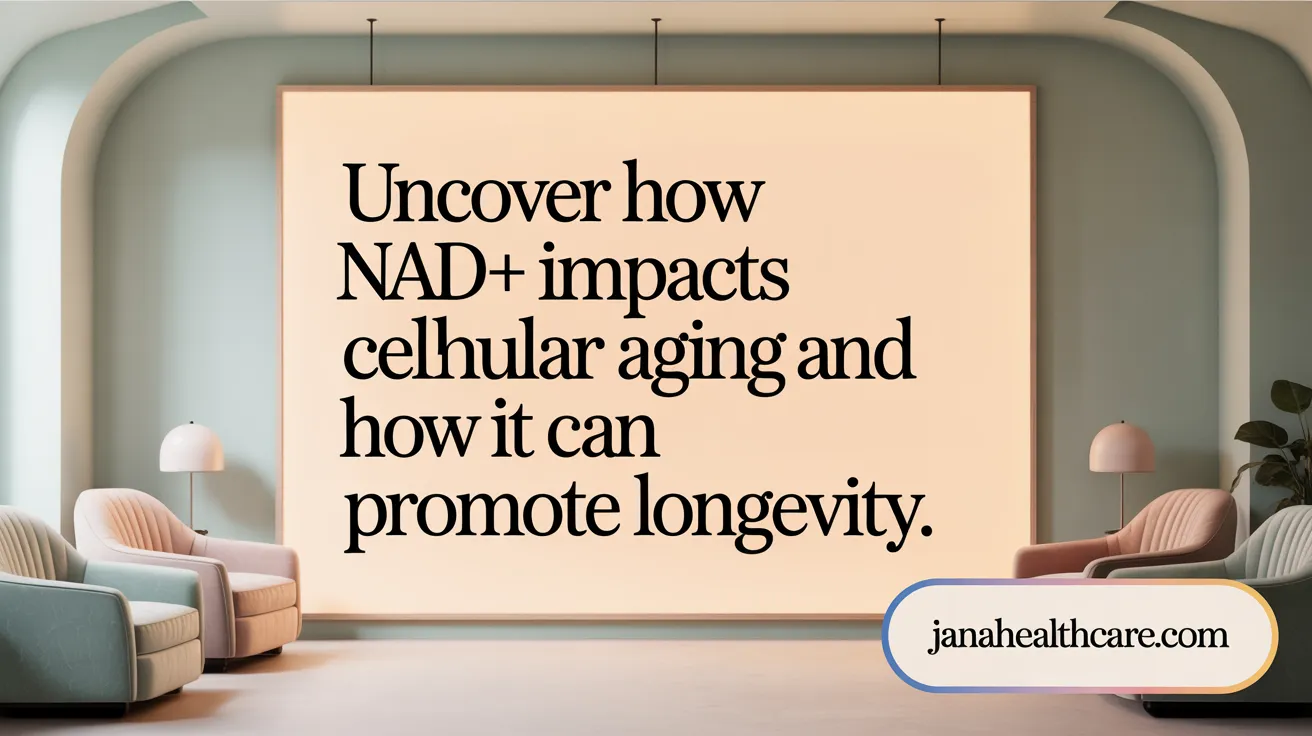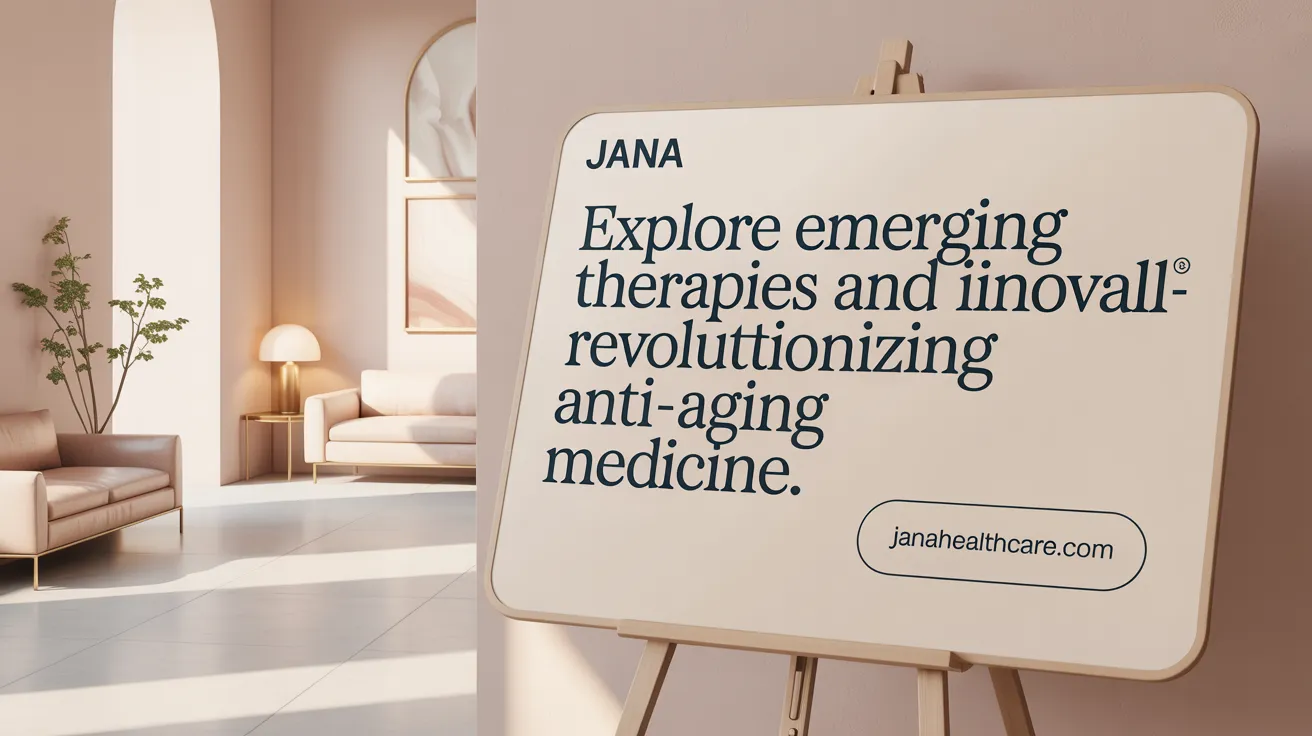Introduction to NAD+ and Its Role in Cellular Health
What is NAD+?
Nicotinamide adenine dinucleotide, or NAD+, is a vital coenzyme found in every living cell. It plays an essential role in converting the food we eat into cellular energy, a process known as cellular respiration. Acting as a critical coenzyme, NAD+ participates in key metabolic pathways such as glycolysis, the tricarboxylic acid (TCA) cycle, and oxidative phosphorylation, which ultimately produce ATP, the energy currency of the cell.
The importance of NAD+ in cellular energy and repair processes
Beyond energy production, NAD+ is crucial for activating enzymes involved in DNA repair, including sirtuins and PARPs. These enzymes help maintain genomic stability and support cellular longevity by repairing damaged DNA and regulating gene expression. NAD+ also influences immune function and supports mitochondrial health, which is essential for energy generation and overall cell function.
The impact of aging on NAD+ levels
As we age, NAD+ levels naturally decline in multiple tissues such as skin, brain, liver, and muscle. This decrease contributes to fatigue, cognitive decline, reduced skin regeneration, and overall diminished vitality. The reduction results partly from increased activity of enzymes that consume NAD+ during chronic inflammation and DNA damage, as well as decreased production within cells. Because of its fundamental role, restoring NAD+ levels through therapy or lifestyle changes is increasingly recognized as a promising approach to promote healthy aging and rejuvenate cellular function.
What is NAD+ and Why is it Critical for Your Cells?
What is NAD+?
NAD+ (nicotinamide adenine dinucleotide) is a vital coenzyme found in every living cell. It is essential for life, playing a central role in converting the food we eat into usable cellular energy and supporting vital processes like DNA repair, immune function, and aging.
Biochemical Role of NAD+
NAD+ acts as an electron carrier in critical energy production pathways such as glycolysis and the tricarboxylic acid (TCA) cycle. It cycles between oxidized and reduced forms, facilitating redox reactions that ultimately generate ATP—the energy currency of the cell. This ATP fuels countless cellular activities, helping sustain life and vitality.
Energy Production through Mitochondria
In mitochondria, NAD+ is fundamental to oxidative phosphorylation, a process producing the majority of cellular ATP. Without adequate NAD+, cells struggle to maintain their energy levels, which can contribute to fatigue and decreased function, linked to mitochondrial dysfunction associated with NAD+ decline.
Activating DNA Repair and Promoting Longevity
Beyond energy, NAD+ activates important enzymes like sirtuins and poly(ADP-ribose) polymerases (PARPs) involved in DNA repair and maintaining genomic stability. These enzymes help fix DNA damage, regulate gene expression, and protect cells from aging and stress-related damage, promoting cellular longevity.
Maintaining adequate NAD+ levels is thus crucial for energy metabolism, effective DNA repair, and overall cellular health, underscoring its importance in healthy aging and systemic vitality.
The Natural Decline of NAD+ and Its Effects on Aging

How Does NAD+ Decline Affect the Body?
NAD+ levels naturally diminish as we age, impacting various tissues including the skin, brain, liver, muscles, and immune cells. This decline correlates with numerous aging symptoms and biological changes. Reduced NAD+ leads to decreased cellular energy production, contributing to common signs like fatigue and brain fog.
Effects on Cognitive and Physical Vitality
With less NAD+, cognitive functions such as focus and memory may decline, while energy metabolism slows down. This can result in reduced stamina and mental clarity. The diminished supply of NAD+ also impairs DNA repair and mitochondrial function, essential for cell health and longevity.
Impact on Skin Aging
In the skin, lower NAD+ levels compromise DNA repair enzymes like PARP1 and sirtuins, allowing DNA damage to accumulate. This leads to cellular senescence, less collagen and elastin production, and chronic inflammation—all key contributors to wrinkles, loss of skin elasticity, and slower wound healing. See more about NAD+ and DNA repair in skin and NAD+ in skin regeneration and wound healing.
Increased NAD+ Consumption by Enzymes
Age-related chronic inflammation and DNA damage activate enzymes such as CD38 and PARPs, which consume NAD+ more rapidly. This heightened consumption, along with decreased synthesis from pathways involving enzymes like NAMPT, accelerates NAD+ depletion in aging tissues. Learn about CD38 and PARP enzymes in NAD+ consumption and NAMPT and amidated NAD+ biosynthesis pathway.
Addressing NAD+ decline through therapy and lifestyle adaptations can help restore cellular energy, improve cognitive function, and support healthier, more youthful skin.
NAD+ and the Hallmarks of Aging: A Cellular Perspective

How is NAD+ linked to the hallmarks of aging?
NAD+ decline impacts several essential cellular processes known as the hallmarks of aging. This coenzyme is critical for maintaining genomic stability, mitochondrial health, and proper cellular communication, all of which deteriorate as NAD+ levels drop with age.
Overview of the nine hallmarks of aging influenced by NAD+ decline
The hallmarks affected by NAD+ depletion include:
- Genomic instability: Damage to DNA accumulates due to less efficient repair.
- Cellular senescence: Cells lose the ability to divide and function properly. (NAD+ role in cellular senescence)
- Epigenetic alterations: Changes in gene expression patterns disrupt normal cell activities. (Epigenetic alterations related to NAD+ decline)
- Mitochondrial dysfunction: Energy production by the mitochondria declines. (Mitochondrial dysfunction linked with NAD+
- Telomere attrition: Shortening of chromosome ends accelerates aging.
- Disrupted intercellular communication: Signaling between cells weakens.
- Loss of proteostasis: Protein maintenance and folding suffer. (Loss of proteostasis due to NAD+ decline
- Deregulated nutrient sensing: Impaired metabolism of nutrients.
- Stem cell exhaustion: Reduced regenerative capacity of tissues.
Role of NAD+ in maintaining genomic stability, mitochondrial function, and cellular communication
NAD+ activates enzymes such as PARPs and sirtuins that repair DNA and maintain genome integrity. It also supports mitochondrial function by fueling oxidative phosphorylation, enabling efficient energy production. Additionally, NAD+ influences cell signaling pathways to sustain healthy communication between cells.
How NAD+ supports epigenetic regulation and prevents cellular senescence
Through the activity of sirtuins, NAD+ modulates epigenetic markers, promoting healthy gene expression and preserving the collagen and elastin matrix in the skin. These actions help prevent the buildup of senescent cells, which can secrete inflammatory factors that accelerate aging. Maintaining NAD+ levels encourages cellular renewal and longevity.
By addressing NAD+ depletion, therapies can target multiple aging processes simultaneously, offering promising avenues to enhance both internal health and skin vitality.
The Role of NAD+ in Skin Health and Aesthetic Rejuvenation
How does NAD+ affect skin aging and repair?
NAD+ plays a critical role in maintaining skin health by supporting DNA repair enzymes such as PARP1 and SIRT1/6. These enzymes help fix DNA damage in skin cells, reducing cellular senescence—the process where aged cells lose their functionality. By preserving DNA integrity, NAD+ helps maintain the skin's natural regenerative capacity. For detailed information, see NAD+ and DNA Repair in Skin.
Impact on collagen and elastin production, wound healing, and skin regeneration
Declining NAD+ levels with age contribute to a reduction in collagen and elastin production, essential proteins for skin elasticity and firmness. Low NAD+ also leads to increased inflammatory factors from senescent skin cells, accelerating skin aging and degradation of the extracellular matrix. By restoring NAD+, sirtuin activity promotes healthy gene expression that supports collagen preservation, enhances wound healing, and encourages skin regeneration. More insight is available in NAD+ in Skin Regeneration and Wound Healing.
How NAD+ therapy can enhance outcomes of aesthetic procedures
NAD+ therapy, often delivered through intravenous infusions, increases intracellular NAD+ levels effectively, aiding mitochondrial function and cellular repair mechanisms in the skin. This enhancement not only improves the skin’s overall vitality but also boosts healing processes following aesthetic treatments such as microneedling and laser therapies. As a result, NAD+ therapy can support better recovery and longer-lasting anti-aging effects, making it a valuable adjunct in aesthetic medicine. Learn more about Innovative NAD+ Anti-Aging Therapies and NAD+ Therapy.
NAD+ in Cardiovascular and Metabolic Health
Importance of NAD+ in heart energy metabolism and redox balance
NAD+ is a vital coenzyme that plays a central role in energy production within heart cells, primarily by supporting mitochondrial oxidative phosphorylation. This process generates ATP, the heart's main energy source. NAD+ also maintains redox homeostasis and activates enzymes that regulate DNA repair and protein function, including sirtuins and PARPs, which are essential for cardiac cellular health.
Role of NAD+ decline in cardiovascular diseases, obesity, and hypertension
As we age or develop conditions like obesity and hypertension, NAD+ levels in heart tissue and other organs naturally decline. This decline disrupts energy metabolism and redox balance, contributing to the progression of cardiovascular diseases. Increased activity of NAD+-consuming enzymes such as CD38 and PARPs, often driven by chronic inflammation, further reduces NAD+ availability, exacerbating heart dysfunction. This is linked with multiple age-related NAD+ decline mechanisms and cellular consequences including loss of proteostasis due to NAD+ decline.
Benefits of NAD+ restoration in improving mitochondrial function and reducing inflammation
Restoring NAD+ levels using precursors like nicotinamide mononucleotide (NMN) or nicotinamide riboside (NR) has demonstrated protective effects in preclinical studies. Elevation of NAD+ enhances mitochondrial function, boosting ATP production and energy capacity in cardiac cells. Additionally, NAD+ restoration reduces inflammation by lowering proinflammatory cytokines and modulating enzyme activities. These effects translate into improved cardiovascular health and protection against conditions such as atherosclerosis, ischemic injury, cardiomyopathies, and heart failure. This reflects the NAD+ role in energy production and redox homeostasis and the NAD+ salvage pathways in the heart.
| Aspect | Role of NAD+ | Impact of NAD+ Decline |
|---|---|---|
| Energy metabolism | Supports ATP production (NAD+ and Cellular Metabolism) | Decreased mitochondrial efficiency |
| Redox balance | Maintains cellular homeostasis (Mechanism of NAD+ in redox homeostasis | Increased oxidative stress |
| DNA repair & protein regulation | Activates sirtuins & PARPs (NAD+ and Cellular Metabolism | Impaired repair and increased damage |
| Inflammation control | Reduces proinflammatory factors | Chronic inflammation exacerbates disease |
These insights highlight NAD+ restoration as a promising avenue for enhancing heart health and metabolic function, especially in aging and at-risk individuals.
NAD+ Precursors: How NMN and NR Help Replenish NAD+ Levels
What are NAD+ precursors and their role?
NAD+ precursors, specifically nicotinamide mononucleotide (NMN) and nicotinamide riboside (NR), are naturally occurring compounds that serve as building blocks in the body’s [NAD+ biosynthesis](https://pmc.ncbi.nlm.nih.gov/articles/PMC9512238/#NAD+ Precursors: NR, NMN, NAM). These supplements play a critical role by entering salvage pathways to boost endogenous NAD+ levels, which otherwise decline with age and stress ([NAD+ Levels Decline with Age](https://pmc.ncbi.nlm.nih.gov/articles/PMC9512238/#NAD+ Levels Decline with Age), [NAD+ precursors protect against cardiac aging and injury](https://www.ahajournals.org/doi/10.1161/CIRCULATIONAHA.121.056589#NAD+ precursors protect against cardiac aging and injury)).
Supporting endogenous NAD+ biosynthesis
NMN and NR are converted in cells to NAD+, predominantly through the amidated salvage pathway involving the enzyme NAMPT ([NAMPT and amidated NAD+ biosynthesis pathway](https://www.ahajournals.org/doi/10.1161/CIRCULATIONAHA.121.056589#NAMPT and amidated NAD+ biosynthesis pathway)). This pathway recycles nicotinamide-containing molecules back into NAD+, replenishing cellular stores efficiently. Because NAD+ itself cannot easily cross cell membranes, these precursors are essential for safely increasing intracellular NAD+ concentrations ([NAD+ precursor transport and membrane permeability](https://www.ahajournals.org/doi/10.1161/CIRCULATIONAHA.121.056589#NAD+ precursor transport and membrane permeability), [NAD+ Precursors: NR, NMN, NAM](https://pmc.ncbi.nlm.nih.gov/articles/PMC9512238/#NAD+ Precursors: NR, NMN, NAM)).
Metabolic and cognitive benefits from studies
Animal research consistently demonstrates that NMN and NR supplementation enhances mitochondrial function, energy metabolism, and muscle endurance ([NAD+ fuels mitochondria](https://dryusra.com/blog/a-cellular-revolution-begins-here-nad-therapy-explained/#NAD+ and cellular energy), [Restoring NAD+ levels extends healthspan](https://www.ahajournals.org/doi/10.1161/CIRCULATIONAHA.121.056589#Restoring NAD+ levels extends healthspan)). It also supports cardiovascular and neurological health by activating enzymes like sirtuins, which regulate cellular repair and longevity ([NAD+ and Sirtuins](https://pmc.ncbi.nlm.nih.gov/articles/PMC9512238/#NAD+ and Sirtuins), [NAD+ and Cellular Metabolism](https://pmc.ncbi.nlm.nih.gov/articles/PMC9512238/#NAD+ and Cellular Metabolism)).
Human clinical trials reveal promising outcomes including improved mitochondrial efficiency, reduced inflammation, better metabolic health, and enhanced cognitive focus ([Clinical trials of NAD+ precursors in cardiovascular disease](https://www.ahajournals.org/doi/10.1161/CIRCULATIONAHA.121.056589#Clinical trials of NAD+ precursors in cardiovascular disease), [NAD+ Therapy Safety](https://greenwich-md.com/nad-therapy/#NAD+ Therapy Safety)). These benefits underline the potential of NMN and NR to combat age-related fatigue, brain fog, and metabolic decline ([NAD+ Levels and Fatigue](https://greenwich-md.com/nad-therapy/#NAD+ Levels and Fatigue), [Brain Fog Relief](https://greenwich-md.com/nad-therapy/#Brain Fog Relief)).
Incorporating NMN and NR supplements, alongside lifestyle factors like [nutrition and NAD+](https://dryusra.com/blog/a-cellular-revolution-begins-here-nad-therapy-explained/#nutrition and NAD+), and [exercise and NAD+ levels](https://dryusra.com/blog/a-cellular-revolution-begins-here-nad-therapy-explained/#exercise and NAD+ levels), offers a personalized approach to optimizing NAD+ levels and supporting whole-body vitality and cognitive wellness ([NAD+ therapy at Dr Yusra Clinic](https://dryusra.com/blog/a-cellular-revolution-begins-here-nad-therapy-explained/#NAD+ therapy at Dr Yusra Clinic)).
Methods of NAD+ Therapy Delivery and Bioavailability
How is NAD+ therapy administered?
NAD+ therapy can be delivered through several routes, including intravenous (IV) infusions, intramuscular (IM) or subcutaneous injections, and oral supplements. Each method aims to replenish NAD+ levels efficiently but varies in speed and bioavailability.
What are the advantages of IV delivery?
IV infusions are considered the most effective delivery method because they provide 100% bioavailability, delivering NAD+ directly into the bloodstream. This bypasses the digestive system, enabling rapid absorption and quicker onset of benefits such as enhanced energy, mental clarity, and cellular repair.
What are typical infusion protocols and dosage ranges?
Typical NAD+ IV therapy involves a slow drip over three to four hours, administered under medical supervision. Clinics often offer doses ranging from 300 mg to 750 mg of NAD+, with optional additional boosts (e.g., an extra 100 mg "NAD+ Push") for more intense effects. The slow infusion rate helps minimize mild side effects like nausea and headaches.
Other administration routes, including intramuscular and subcutaneous injections, are alternatives that provide good absorption but generally act slower than IV infusions. Oral supplements, often containing NAD+ precursors such as nicotinamide riboside (NR) or nicotinamide mononucleotide (NMN), support NAD+ levels over time but have lower bioavailability compared to IV therapy. For more on NAD+ precursors for energy, see related resources.
By tailoring the delivery method and dosage to individual health goals, NAD+ therapy can optimize energy production, cellular repair, and overall vitality effectively and safely under professional care.
Clinical Safety and Potential Side Effects of NAD+ Therapy
Is NAD+ therapy safe?
NAD+ therapy is generally considered safe when administered under the care of qualified healthcare professionals. Clinics like Dr Yusra Clinic in Brooklyn, NY and Greenwich MD in CT emphasize medically supervised treatments to ensure patient safety and effective dosing.
What are the common mild side effects?
Common side effects associated with NAD+ therapy are mostly mild and often related to the infusion rate. These include:
- Nausea
- Headaches
- Flushing
- Muscle cramps
These symptoms are typically manageable and tend to resolve quickly, especially when the infusion speed is adjusted appropriately. See more on NAD+ Therapy Side Effects and NAD+ therapy safety.
Are there any contraindications to NAD+ therapy?
NAD+ therapy is not recommended for certain groups to avoid adverse effects. Contraindications include:
- Active cancer
- Severe liver or kidney disease
- Pregnancy
Medical professionals carefully screen patients and tailor NAD+ treatments to individual health conditions, prioritizing safety. More details are available on contraindications for NAD+ therapy.
By maintaining careful medical oversight and considering patient health status, NAD+ therapy offers a safe approach to replenishing vital cellular coenzymes that support energy metabolism, DNA repair, and healthy aging.
Lifestyle Factors That Support Endogenous NAD+ Production
How can lifestyle influence NAD+ levels?
Healthy lifestyle habits play a crucial role in supporting the body's natural NAD+ production. Balanced nutrition, regular exercise, intermittent fasting, and effective stress management are all ways to enhance NAD+ biosynthesis and maintain cellular energy and repair functions.
Nutrition rich in NAD+ precursors—such as niacin-containing foods—and antioxidants supports the salvage pathways that replenish NAD+ levels. Exercise stimulates mitochondrial function and elevates NAD+ demand, promoting its synthesis.
Intermittent fasting has been linked to increased activity of enzymes like NAMPT, enhancing NAD+ recycling and reducing its catabolic breakdown. Stress management is equally important, as chronic stress and inflammation activate NAD+-consuming enzymes such as CD38 and PARPs, accelerating NAD+ depletion (NAD+ consumption by sirtuins, PARPs, and CD38).
Addressing these lifestyle factors alongside supplementation ensures a holistic approach to optimize NAD+ levels, improving metabolism, cognitive focus, and healthy aging (NAD+ and Healthy Aging). Reducing chronic inflammation through healthy living helps limit excessive NAD+ consumption, promoting longer-lasting energy and better cellular repair (NAD+ Therapy Safety).
By integrating these natural methods with medically supervised NAD+ therapies, individuals can harness synergistic benefits for enhanced vitality and regenerative health.
Integrating NAD+ Therapy into Multidisciplinary Wellness Practices

Role of NAD+ Therapy in Integrated Medical, Aesthetic, and Wellness Care
NAD+ therapy plays a versatile role in comprehensive health management by supporting cellular energy production, DNA repair, and metabolic regulation. Its ability to replenish declining NAD+ levels addresses systemic aging effects such as fatigue, cognitive decline, and skin aging. This positions NAD+ therapy as an essential tool within integrated medical frameworks, where it complements interventions targeting cardiovascular health, metabolic balance, and neuroprotection.
Potential Synergy with Cosmetic Procedures and Anti-Aging Strategies
By enhancing cellular repair and mitochondrial function, NAD+ therapy significantly boosts skin regeneration, collagen synthesis, and wound healing capacity. These effects synergize with aesthetic treatments like microneedling and laser therapy, optimizing patient recovery and extending the longevity of cosmetic results. Furthermore, NAD+ supports epigenetic regulation through sirtuins, contributing to healthier skin gene expression and reduced inflammation, thus enhancing overall anti-aging strategies.
How Clinics Like Jana HealthCare Utilize NAD+ Therapy to Enhance Patient Outcomes
Clinics such as Jana HealthCare integrate NAD+ therapy as part of personalized wellness plans. They administer medically supervised intravenous infusions tailored to individual health goals, ensuring high bioavailability and safety. This multidisciplinary approach combines NAD+ replenishment with lifestyle counseling, nutritional guidance, and complementary anti-aging modalities, offering patients improved energy, cognitive focus, and rejuvenated skin. Through this fusion of medical, aesthetic, and holistic care, such practices optimize both internal health and external appearance for sustained wellness.
Who Can Benefit Most from NAD+ Therapy?

Who is NAD+ therapy suitable for?
NAD+ therapy is an excellent option for several groups seeking to enhance energy, mental clarity, and overall well-being. Older adults experience a natural decline in NAD+ levels, which contributes to fatigue, cognitive decline, and aging signs. NAD+ therapy can help replenish these levels, supporting healthy aging and cellular repair processes.
Busy professionals and high performers also find NAD+ therapy beneficial as it promotes improved focus, memory, and sustained energy—vital for intense mental demands. Individuals suffering from fatigue or brain fog due to lifestyle, stress, or chronic health challenges may experience rapid revitalization following NAD+ treatments.
Moreover, those recovering from substance use disorders can use NAD+ therapy to support detoxification and neurological recovery. Wellness enthusiasts look to NAD+ therapy as an adjunct for neuroprotection, metabolic flexibility, and overall vitality enhancement.
Through intravenous infusions or other delivery methods, NAD+ therapy offers rapid bioavailability to support mitochondria-driven energy production and activate vital cellular repair enzymes. This makes it a versatile tool for both health optimization and neurocognitive support across diverse populations.
The Future of NAD+ Therapy in Anti-Aging and Regenerative Medicine

Emerging Research on NAD+ metabolism and cardiac health and Combination Therapies Targeting Multiple Pathways
Research continues to reveal that NAD+ levels decline with age is a complex process involving multiple biological pathways and enzymes. Besides supplementation with NAD+ precursors like NMN and NR, innovative approaches are exploring combinations with CD38 inhibitors and NAMPT activators. These combination strategies aim to both reduce NAD+ consumption and enhance its salvage and recycling, potentially delivering broader and more sustained benefits for tissue regeneration, metabolism, and cellular repair.
Potential for Expanded FDA Approvals and Clinical Applications
Although NAD+ therapy is currently used off-label and not FDA-approved for disease treatment, ongoing human clinical trials show promising improvements in NAD+ metabolism and cardiac health as well as cognitive function and inflammation reduction. As the evidence base grows, we can anticipate expanded regulatory approvals and wider clinical adoption. This will further integrate NAD+ therapies into mainstream anti-aging medicine, especially for conditions tied to mitochondrial dysfunction, metabolic syndrome, and skin rejuvenation.
Innovations in Delivery Methods and Personalized Treatment Protocols
Advancements in delivery methods are underway to maximize NAD+ bioavailability and patient comfort. Intravenous infusions remain the most efficient for rapid, direct NAD+ replenishment with 100% bioavailability, but alternative routes such as subcutaneous injections and optimized oral formulations are gaining attention for convenience and tailored dosing.
Personalized protocols are also emerging, tailored not only to patients’ health goals and underlying conditions but also integrating lifestyle factors like nutrition, exercise, and stress management which support endogenous NAD+ production. Clinics specializing in NAD+ therapy increasingly emphasize medical oversight and customization to safely optimize healthspan and aesthetic outcomes.
Together, these advancements position NAD+ therapy at the forefront of anti-aging and regenerative medicine, promising targeted cellular rejuvenation and improved quality of life for aging adults.
Conclusion: NAD+ Therapy as a Cutting-Edge Approach to Cellular Rejuvenation and Wellness
The Vital Role of NAD+
Nicotinamide adenine dinucleotide (NAD+) is fundamental for cellular health, fueling energy production via mitochondria and activating essential DNA repair enzymes. Its decline with age impacts many body functions, contributing to fatigue, cognitive challenges, and visible signs of aging such as skin deterioration.
Therapeutic Benefits of NAD+ Restoration
Restoring NAD+ levels has been linked to improved metabolic health, enhanced mental clarity, and greater cellular repair. NAD+ therapy, particularly through intravenous infusions, offers high bioavailability and rapid results, supporting energy rejuvenation and cognitive focus. Studies indicate that NAD+ replenishment may also support cardiovascular health and promote better skin regeneration by mitigating cellular senescence.
Supporting Healthy Aging and Vitality
NAD+ therapy represents a promising approach to slowing aging processes at a cellular level, promoting youthful vitality and resilience. By reinforcing mitochondrial function and activating longevity-promoting enzymes, it encourages improved physical performance and overall wellness.
Personalized and Safe Treatment
Given the complex role of NAD+ in the body, individualized therapy under the guidance of qualified healthcare professionals is essential. This ensures treatments are tailored to personal health goals while considering safety factors, including potential contraindications.
If you are considering NAD+ therapy to boost your energy, support healthy aging, or enhance overall well-being, consulting with a knowledgeable healthcare provider is the best step toward a safe and effective experience.
